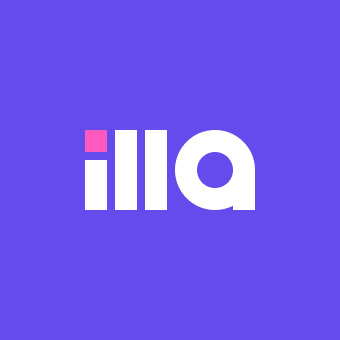Top 5 awesome self-hosted open source low code platforms that can be used as Redis GUI 2023
 ILLA Cloud
ILLA Cloud
In today's fast-paced world, businesses are constantly seeking efficient and user-friendly solutions to manage their data effectively. Graphical User Interfaces (GUIs) play a vital role in simplifying complex tasks and providing a seamless user experience. When it comes to working with Redis, a popular in-memory data structure store, having a reliable Redis GUI tool can greatly enhance data visualization, interaction, and management. In this blog post, we will explore the top 5 awesome self-hosted open-source low-code platforms that can be used as Redis GUI tools in 2023. These platforms empower developers to build powerful Redis GUIs with ease and flexibility, allowing them to streamline their data management processes.
1. ILLA Cloud

ILLA Cloud is an exceptional self-hosted open-source low-code platform that enables developers to build internal tools effortlessly. With its powerful and flexible UI library, ILLA Cloud empowers developers to create web applications that seamlessly connect to databases and APIs. Notably, ILLA Cloud supports Redis as one of its data sources, making it an excellent choice for building a Redis GUI.
Key Features of ILLA Cloud:
Free and open-source: ILLA Cloud is entirely free to use, and developers can even contribute to its improvement on GitHub.
Cross-platform and cloud-based: It offers compatibility across various devices and operating systems, and developers can deploy it on their server or leverage ILLA Cloud's service.
Multiple data source support: ILLA Cloud allows seamless integration with various databases and APIs, such as PostgreSQL, MongoDB, MySQL, Stripe, Google Sheets, AWS S3, and more.
Drag-and-drop interface: Developers can create user interfaces effortlessly by leveraging the intuitive drag-and-drop interface, eliminating the need for writing HTML or CSS code.
Rich set of components: ILLA Cloud offers a wide range of customizable components to fulfill diverse application requirements.
JavaScript support: Developers can utilize JavaScript to add logic, transform data, define complex workflows, and inject dynamic values into components and queries.
Collaboration: ILLA Cloud facilitates collaboration by enabling developers to work together in real-time, share links, and provide feedback.
Supportive community: Developers can join the active Discord community of ILLA Cloud to seek assistance, share feedback, ask questions, and stay updated.
2. Appsmith

Appsmith is another remarkable self-hosted open-source low-code platform that offers an extensive range of features for building robust web applications. While it doesn't specifically focus on Redis, it provides flexibility in integrating with Redis and creating a customized Redis GUI.
Key Features of Appsmith:
Open-source and self-hosted: Appsmith is open-source, allowing developers to contribute and modify the platform according to their requirements.
Rapid application development: It enables developers to build applications quickly using its low-code development approach.
Multiple data source support: Appsmith supports a variety of data sources, including databases like MySQL, PostgreSQL, MongoDB, and REST APIs.
Drag-and-drop interface: Developers can leverage the intuitive drag-and-drop interface to design stunning user interfaces effortlessly.
JavaScript support: Appsmith offers extensive JavaScript support, allowing developers to incorporate custom logic and interactivity.
Collaboration: Appsmith facilitates collaboration among team members, making it easier to work together on projects.
Active community: Developers can join the vibrant Appsmith community, where they can find support, share ideas, and contribute to the platform's growth.
Drawbacks of Appsmith:
As an open-source project, the availability of advanced support and enterprise-level features might be limited.
Integration with Redis might require additional configuration and customization.
3. Budibase

Budibase is a powerful self-hosted open-source low-code platform that empowers developers to build robust web applications with ease. Although it doesn't specifically focus on Redis, it provides the flexibility to integrate Redis and create custom Redis GUIs.
Key Features of Budibase:
Open-source and self-hosted: Budibase is an open-source platform that can be self-hosted, providing complete control over the infrastructure.
Rapid application development: It offers a low-code development approach, enabling developers to build applications quickly.
Multiple data source support: Budibase supports various data sources, including popular databases and REST APIs.
Intuitive interface builder: Developers can utilize the intuitive interface builder to create visually appealing user interfaces without writing extensive code.
JavaScript support: Budibase allows developers to incorporate custom logic and interactivity using JavaScript.
Collaboration: Budibase facilitates collaboration among team members, making it easier to work together on projects.
Active community: Developers can join the Budibase community to seek assistance, share ideas, and contribute to the platform's growth.
Drawbacks of Budibase:
As an open-source project, advanced support and enterprise-level features may be limited.
Integration with Redis might require additional configuration and customization.
4. Tooljet

Tooljet is a self-hosted open-source low-code platform designed to simplify the development process and accelerate application creation. While not specifically tailored for Redis, Tooljet offers the flexibility to integrate Redis and create custom Redis GUIs.
Key Features of Tooljet:
Open-source and self-hosted: Tooljet is an open-source platform that can be self-hosted, providing developers with full control over their applications.
Low-code development: It offers a low-code approach, allowing developers to build applications rapidly and efficiently.
Multiple data source support: Tooljet supports various data sources, including popular databases and REST APIs.
Visual interface builder: Developers can leverage the visual interface builder to design intuitive and visually appealing user interfaces.
Customization with JavaScript: Tooljet allows developers to extend the functionality of their applications using JavaScript.
Collaboration: Tooljet enables collaboration among team members, simplifying the development process for projects.
Growing community: Tooljet has an active community where developers can seek support, share knowledge, and contribute to the platform's evolution.
Drawbacks of Tooljet:
As an open-source project, advanced support and enterprise-level features may have limitations.
Integration with Redis might require additional customization and configuration.
5. Openblocks

Openblocks is a self-hosted open-source low-code platform that empowers developers to create web applications with ease. While it doesn't have specific Redis integration, developers can customize Openblocks to incorporate Redis and build personalized Redis GUIs.
Key Features of Openblocks:
Open-source and self-hosted: Openblocks is an open-source platform that can be self-hosted, providing developers with complete control over their applications.
Low-code development: It offers a low-code approach, enabling developers to build applications quickly and efficiently.
Multiple data source support: Openblocks supports various data sources, including popular databases and REST APIs.
User-friendly interface builder: Developers can utilize the user-friendly interface builder to visually design application interfaces.
Extensibility with JavaScript: Openblocks allows developers to extend the platform's functionality using JavaScript.
Collaboration: Openblocks facilitates collaboration among team members, enhancing productivity and teamwork.
Supportive community: Openblocks has an active community where developers can seek assistance, share ideas, and contribute to the platform's growth.
Drawbacks of Openblocks:
As an open-source project, advanced support and enterprise-level features may be limited.
Integration with Redis might require additional customization and configuration.
Conclusion
In 2023, developers have a range of excellent self-hosted open-source low-code platforms to choose from when building Redis GUIs. ILLA Cloud, Appsmith, Budibase, Tooljet, and Openblocks offer impressive features, flexibility, and customization options. While each platform has its own strengths and drawbacks, they all empower developers to create powerful Redis GUIs and streamline their data management processes. Whether you prioritize community support, specific features, or ease of use, these platforms provide the foundation for building exceptional Redis GUI tools that cater to your specific business needs.
Join our Discord Community: discord.com/invite/illacloudTry ILLA Cloud for free: cloud.illacloud.comILLA Home Page: illacloud.comGitHub page: github.com/illacloud/illa-builder
Source:
(1) ILLA Cloud | Build internal tools at lightning speed. https://www.illacloud.com/.
(2) ILLA Cloud - Product Information, Latest Updates, and Reviews 2023 .... https://www.producthunt.com/products/illa.
(3) How to Automate Tasks with ILLA Cloud. https://blog.illacloud.com/how-to-automate-tasks-with-illa-cloud-a-low-code-platform-for-internal-tools/.
(4) About ILLA - ILLA. https://www.illacloud.com/docs/about-illa.
(5) ILLA Cloud Hosting Pricing. https://www.illacloud.com/pricing
(6) ILLA Cloud. https://www.illacloud.com/illacloud
Subscribe to my newsletter
Read articles from ILLA Cloud directly inside your inbox. Subscribe to the newsletter, and don't miss out.
Written by

ILLA Cloud
ILLA Cloud
Refactor everyone's work. Official Website: http://illacloud.com GitHub Repo: http://github.com/illacloud/illa-builder